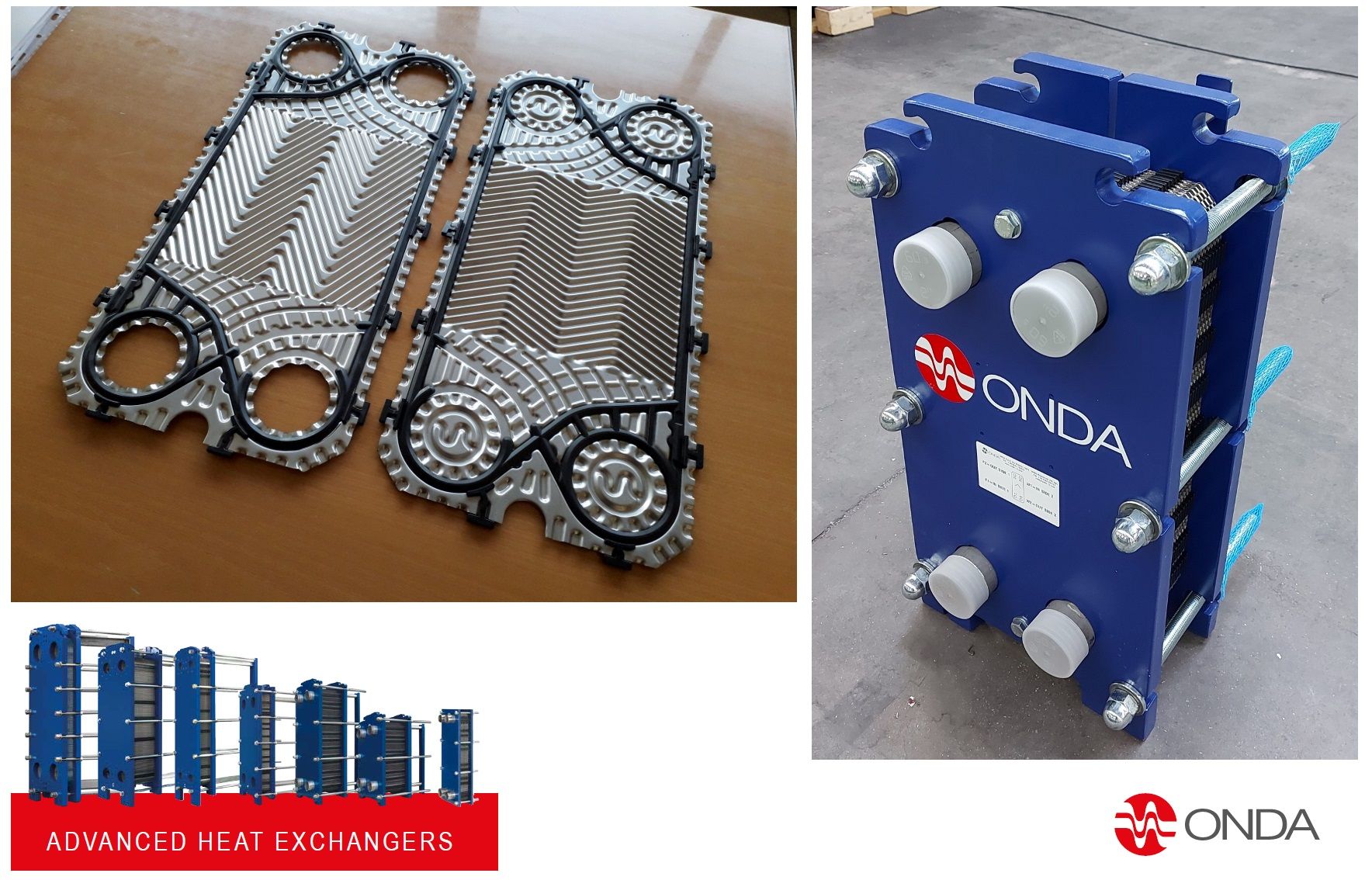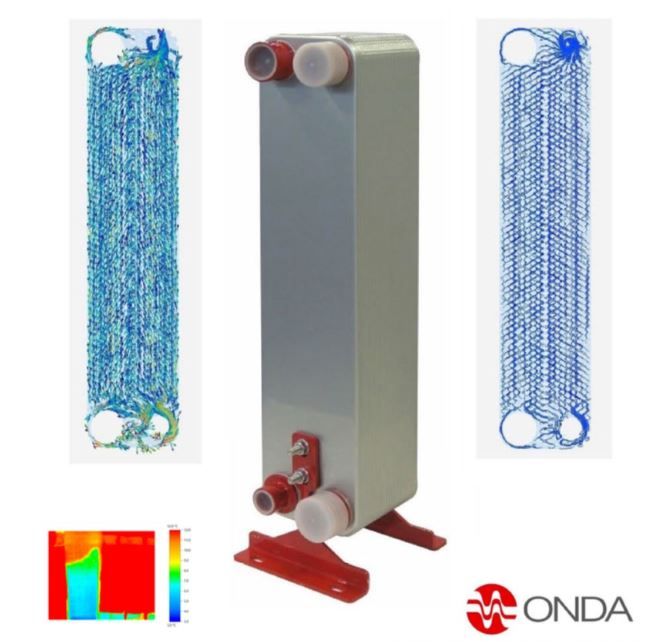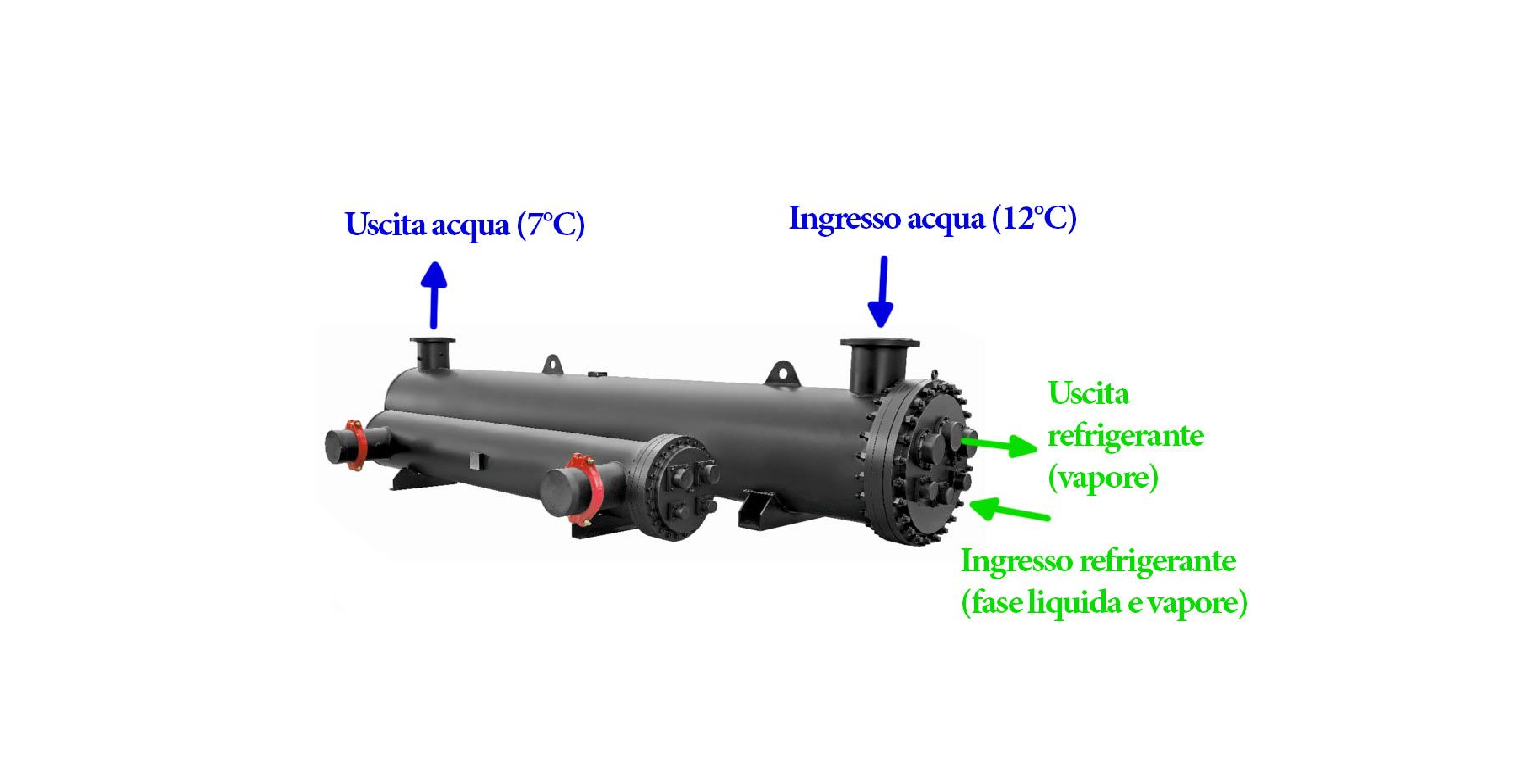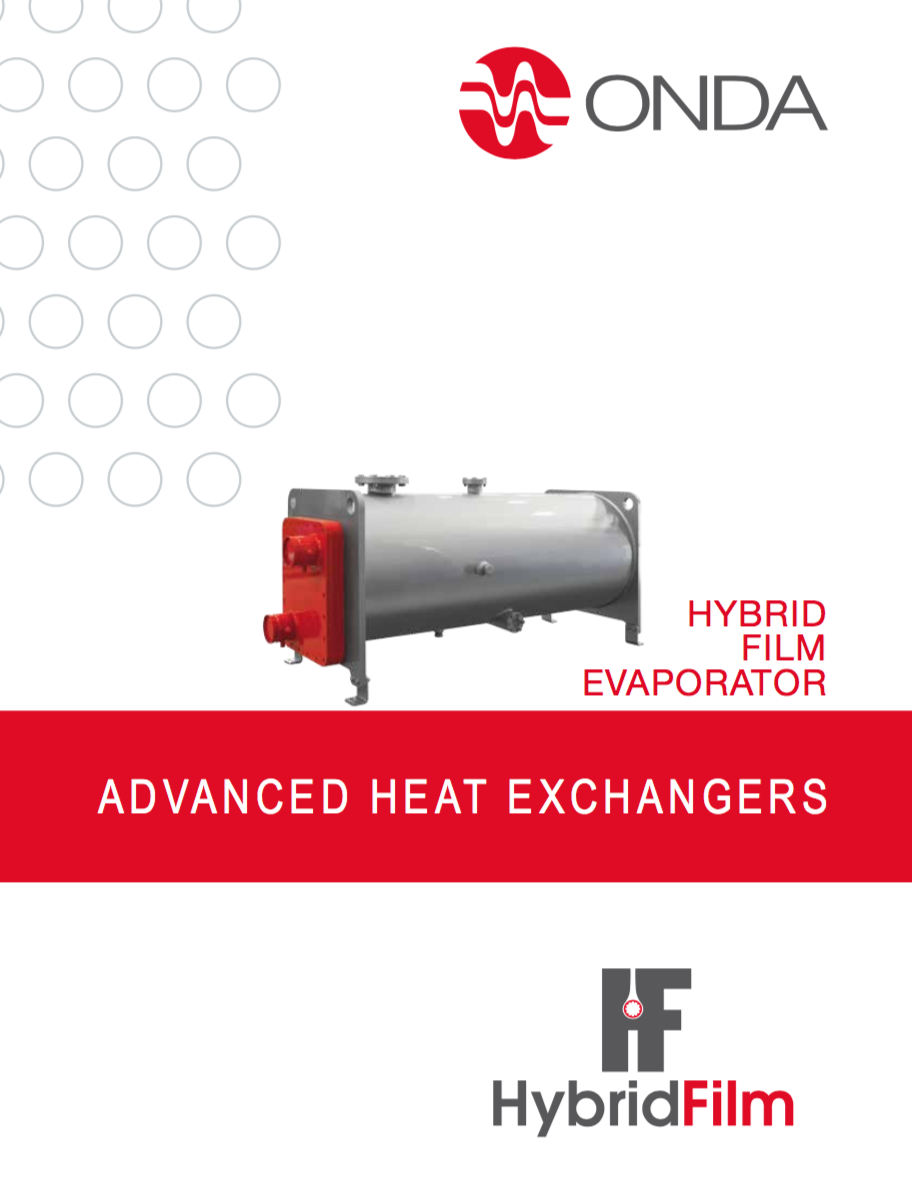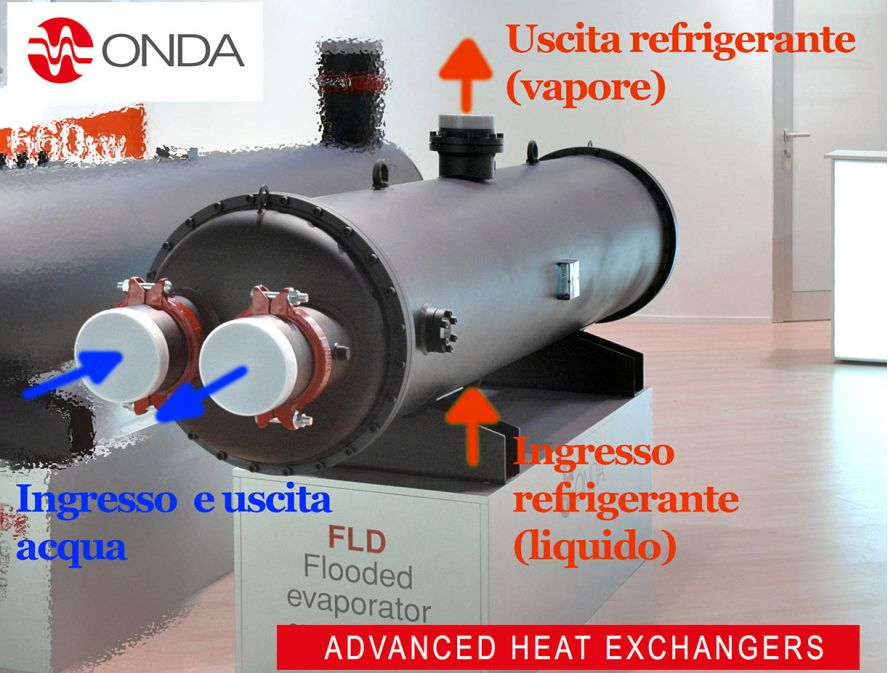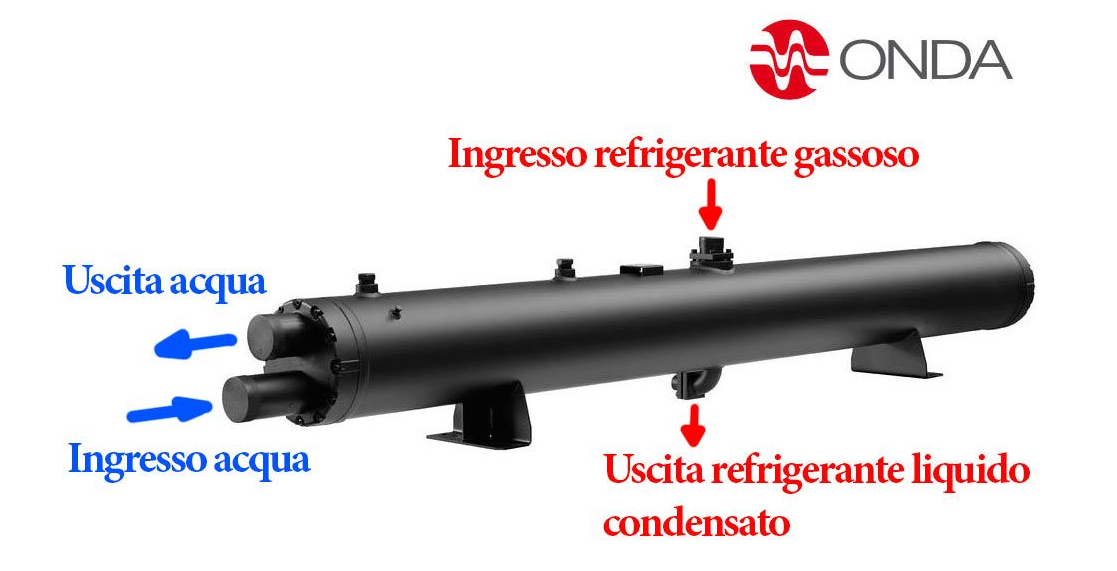2020 Purdue Conferences
1 June 2021Articoli scientifici
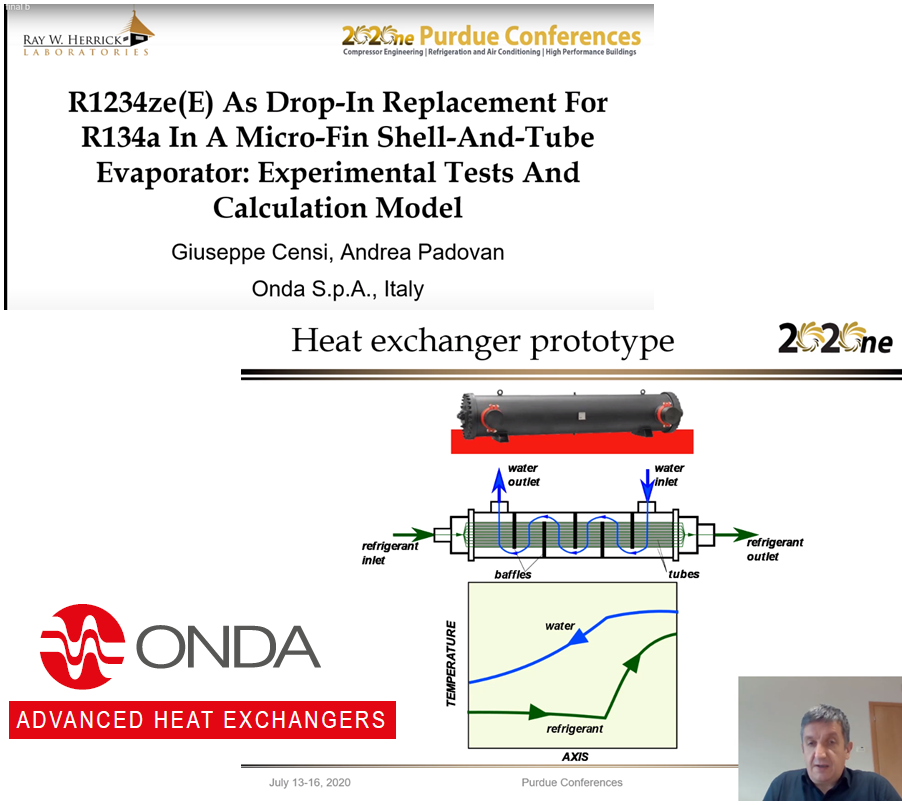
Onda attended the “2020ne Purdue Conferences (Compressor Engineering – Refrigeration and Air Conditioning – High Performance Buildings)”, May 24-28, 2021, presenting the original paper “R1234ze(E) As Drop-In Replacement For R134a In A Micro-Fin Shell-And-Tube Evaporator: Experimental Tests And Calculation Model”.
With this active contribution to the worldwide research against global warming, Wieland Onda consolidates its presence in the international scientific network.
The complete presentation can be found at the link https://youtu.be/NuHCRUiaFq0
New Gasketed Plate Heat Exchangers GG004
Plate and Frame model GG004
Onda present the new model of gasketed plate heat exchanger, the GG004.
It have a DN50 - 2" AISI 316 connections and it can reach PN16 Bar.
The exchange plate are available in AISI316 - AISI304 - Titanium and the gasket in NBR - EPDM - VITON - HNBR.
New Brazed Plate Heat Exchangers S87 e S93
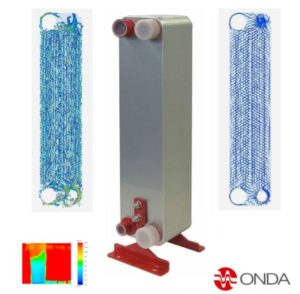
Onda is introducing the new BPHE models S87 and S93 for HVAC&R applications with boosting performance +30% vs current S82 in terms of kW/m2.
The design of the plate corrugations pattern has been optimized thanks to a CFD analysis supported by thermal laboratory test.
The new Wieland Onda brazed plates S93 and S87 have been developed to respond to high efficiency and low water pressure drop market demand using high pressure refrigerants as R454B, R32 and R410A
New patented distribution system which allows to achieve stable performance with large plate package.
BENEFITS VS S82
• Evaporator and condenser average performance: +30% kW/m2
• Lower DPwater -25% at same flow rate
• Stainless steel average weight saving : -20%
CONFIGURATION
• Capacity range 20 – 90 kW
• Two model range PS 30 barg, PS 49 barg
Shell and Tube evaporators
16 July 2020How a plate heat exchanger works
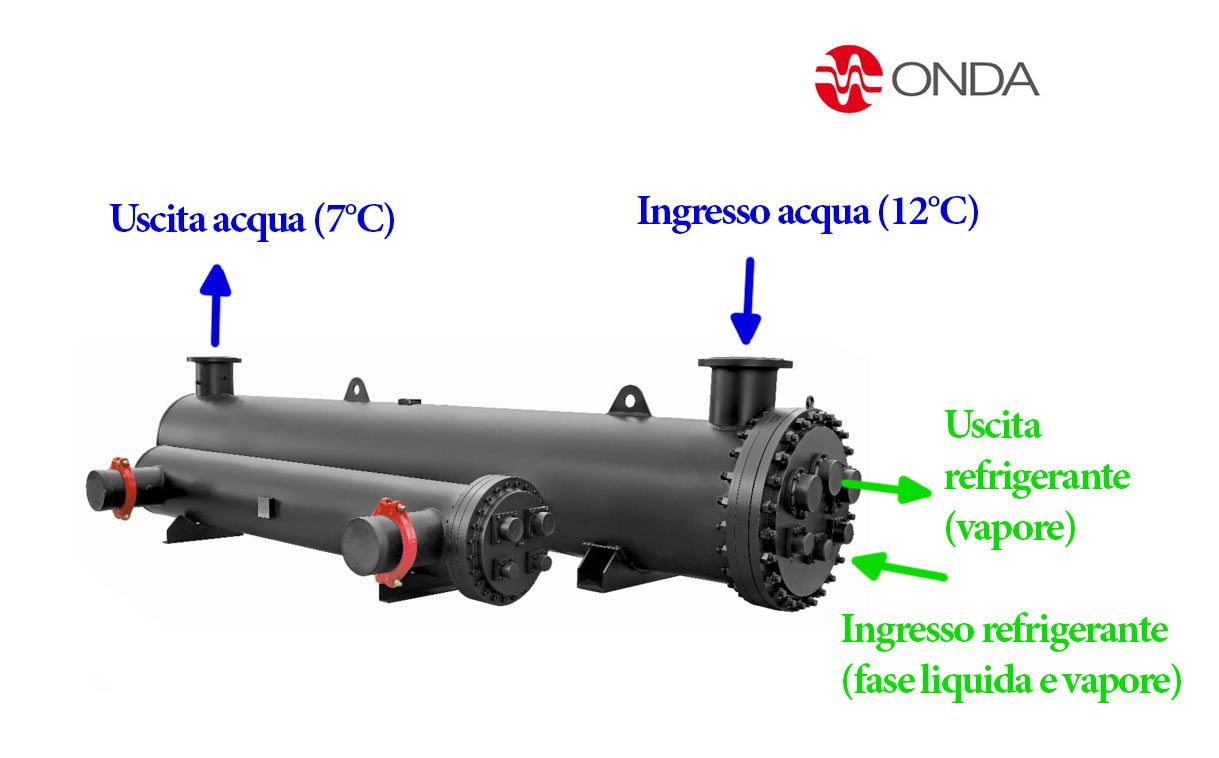
Shell and Tube evaporators LSE - SSE
The main applications of dry-expansion evaporators are the water chilling in air conditioning plants, the liquid or brine solutions cooling in refrigeration plants, the water heating in heat pump systems.
LSE / SSE models are optimized for use with R134a, but can be used with the most common refrigerants; through the selection software and the support of our Technical Department, it will be possible to get the best solution for any working condition.
The Wieland Onda shell & tube compact evaporators have cooling capacity range, at specified standard conditions, from 160 kW till 1600 kW, up to 4 refrigerant circuits.
The tube bundle, directly welded to the shell, is non-removable: the straight tubes configuration allows anyway to clean easily the inner of tubes.
This evaporators can guarantee a better thermal performance through a perfect counter-current flow, and the reduction of by-pass flow, thanks to strict
mechanical tolerances of the components.
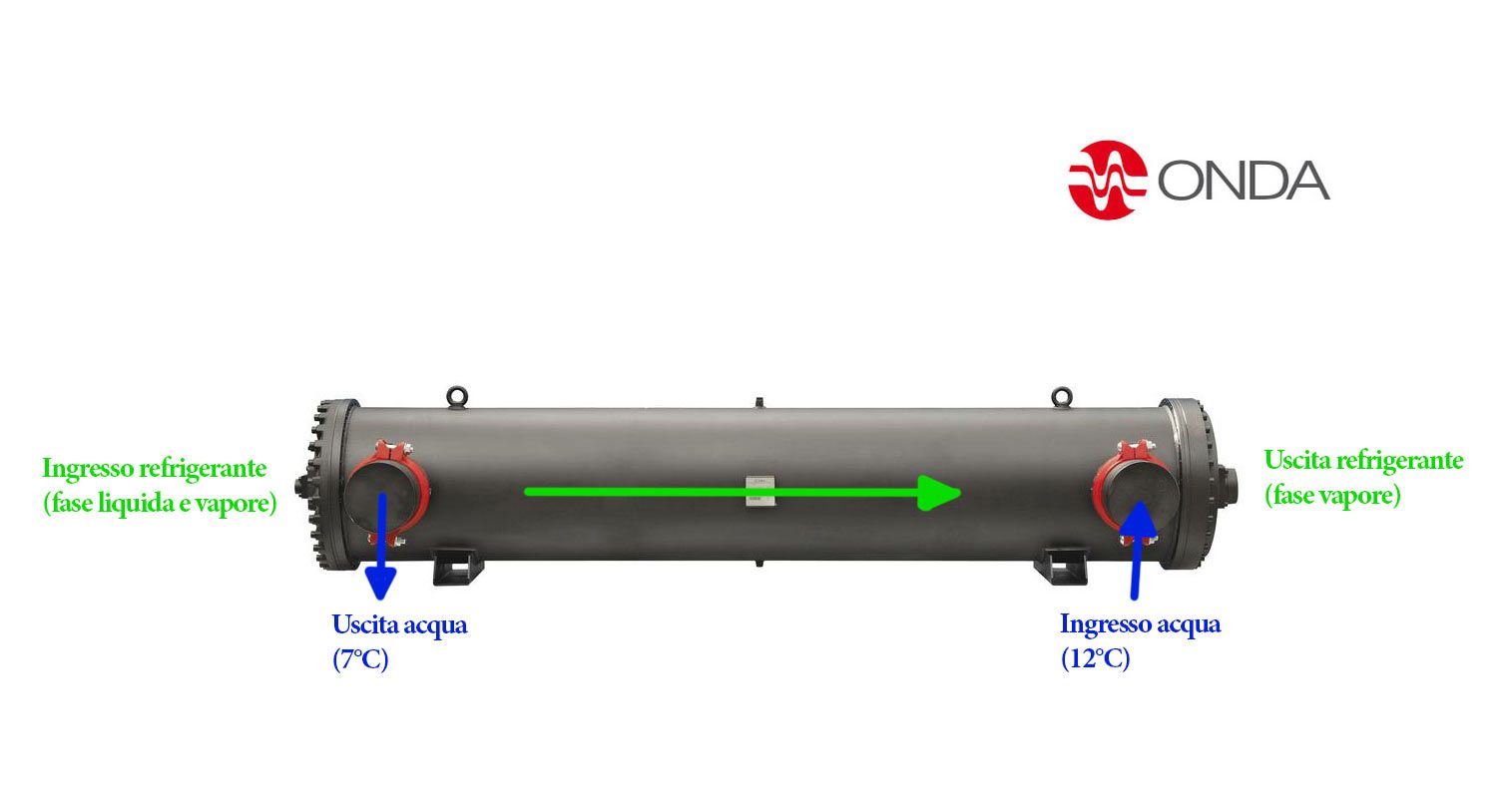
Shell and Tube evaporators LPE - MPE - HPE
The main applications of our dry-expansion exchangers are the water, the liquid or brine solutions cooling in refrigeration plants and the hot water productio in heat pumps.
Suitable refrigerants are: HCFCs, HFCs, and others, unless they are compatible with material construction.
The Wieland Onda shell & tube compact exchangers series have cooling capacity range, at specified standard conditions, from about 15
up to 1400 kW with 1 to 4 refrigerant circuits.
Hybrid Film Evaporator
12 May 2020How a plate heat exchanger works

Benefits
Onda has recently developed a new innovative evaporator to respond to an increasing efficiency market demand and a reduced refrigerant charge to balance the continuous refrigerants cost and taxes increase.
The “Hybrid Film“ evaporator combines the benefits of the pool boiling reliable performance and the falling film evaporator low refrigerant charge.
The concept of this innovative heat exchanger has been developed by R&D and validated in Onda’s laboratory with turbo (no oil) and screw compressor (with oil).
The core design belongs to Onda’s IPR and it is patent pending.
The Hybrid Film evaporator new distribution system allows to keep control of the refrigerant liquid around the tubes in all the different working conditions, at full load and at part load as well.
The amount of refrigerant liquid surroundings the tube is also optimized and reduced.
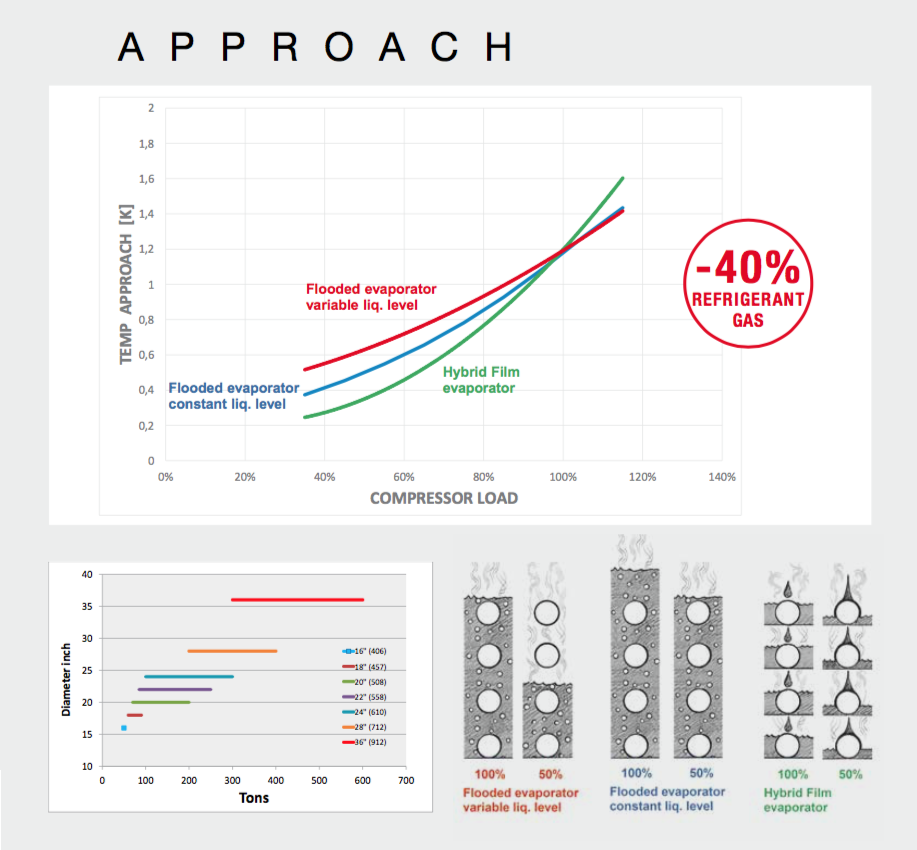
Approach
Part load: when moving < 80% of the load the hybrid lm is performing better with a reduced temperature approach with a positive impact on the chiller IPLV.
Similar performance is also expected with HFO R1234ze. Refrigerant charge reduction : the charge saving vs flooded is in a range of 35 – 40%.
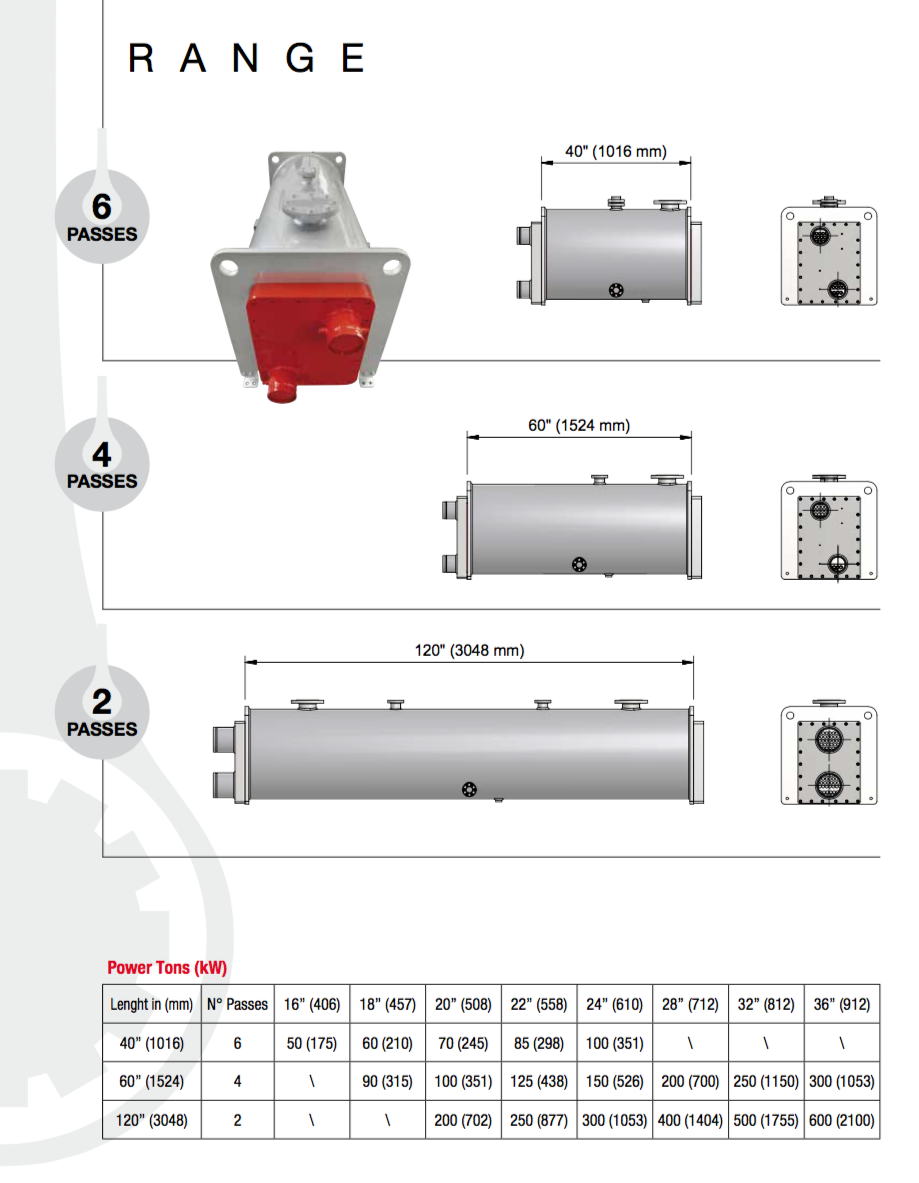
You can download the catalogue in the link below :
https://www.onda-it.com/eng/products/shell-and-tube-heat-exchangers/hybrid-film-evaporator
Flooded Evaporators
2 May 2020How a plate heat exchanger works
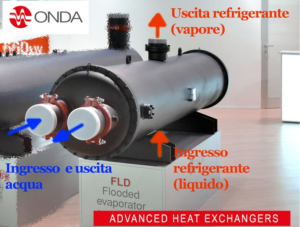
Flooded Evaporators
In the flooded evaporators, a pool of refrigerant in the shell is submerging the tubes to a set level.
As the refrigeration load varies, a refrigerant-level control acts to maintain the liquid level in the shell.
The refrigerant pool in the shell behaves as a flywheel, allowing the control of the flooded evaporator to successfully track the varying load of a batch process.
More than 7 years of specific experience and continue laboratory tests are combined in the Wieland Onda flooded evaporators, the best flooded evaporator ever.
Designed for high efficiency water chillers in combination with oil-free compressors, they can guarantee an optimal performance even in
presence of screw compressors.
Brazed plate heat exchangers : Evaporation/Condensation/Single phase
15 November 2019How a plate heat exchanger works

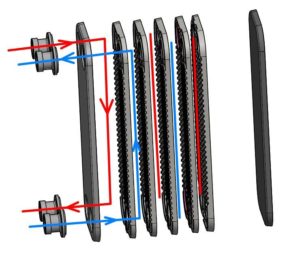
Brazed plate heat exchangers: single-phase and two-phase
Plate heat exchangers have the general purpose of heating / cooling process fluids (for example water, oil, glycol, etc.)
In the two-phase field they are used as evaporator or condenser (using refrigerant fluids such as R134a, R1234ze, R410A, etc.) in a vapor compression refrigeration cycle.
In this article we will try to explain in simple way these types of heat exchangers.
In the case of a single-phase process we have two fluids that enter the heat exchanger generating a perfect countercurrent flow, therefore, the hypothetical maximum outlet temperature of both fluids will be equal to the inlet temperature of the opposite fluid.
This could only happen if the exchange area tended to infinity, so in reality this cannot happen.
So let's see an example of a single-phase countercurrent flow, in which the cold fluid (in blue) enters and increases his temperature removing heat from the hot fluid (red) which is going to cool down, decreasing its temperature

In the case of a plate heat exchangers evaporator, in general, the purpose is to cool down a process fluid by evaporating a refrigerant fluid at constant temperature.
By far the most common application is to cool water from 12 ° C to 7 ° C for air conditioning systems.
In this plate heat exchanger, the refrigerant fluid enters in liquid phase at high speed (in reality the inlet vapor quality goes from 0.2 to 0.3) and evaporates through the plate exchanger from the bottom upwards, removing heat from the fluid that flows on the other side.
The last part of the exchanger is used to overheat the already evaporated gas so that there is no return of liquid particles in the compressor to avoid breakage of the compressor itself.
The most important part of this process of evaporation is the correct distribution of the two-phase fluid at the inlet of the heat exchanger.
The target is to introduce the same gas flow rate in every channel of the heat exchanger along all the package of plates.
Onda has patented a distribution system that allows gas to be distributed homogeneously along the entire exchanger.
As we can see in the figure, it can be seen that a correct distribution has a homogeneous overheating zone of the gas (in orange) from the beginning to the end of the exchanger.
If the distribution is not homogeneous we will have areas with more superheated steam and areas with less superheated steam, the operation of the chiller in this case may be unstable.

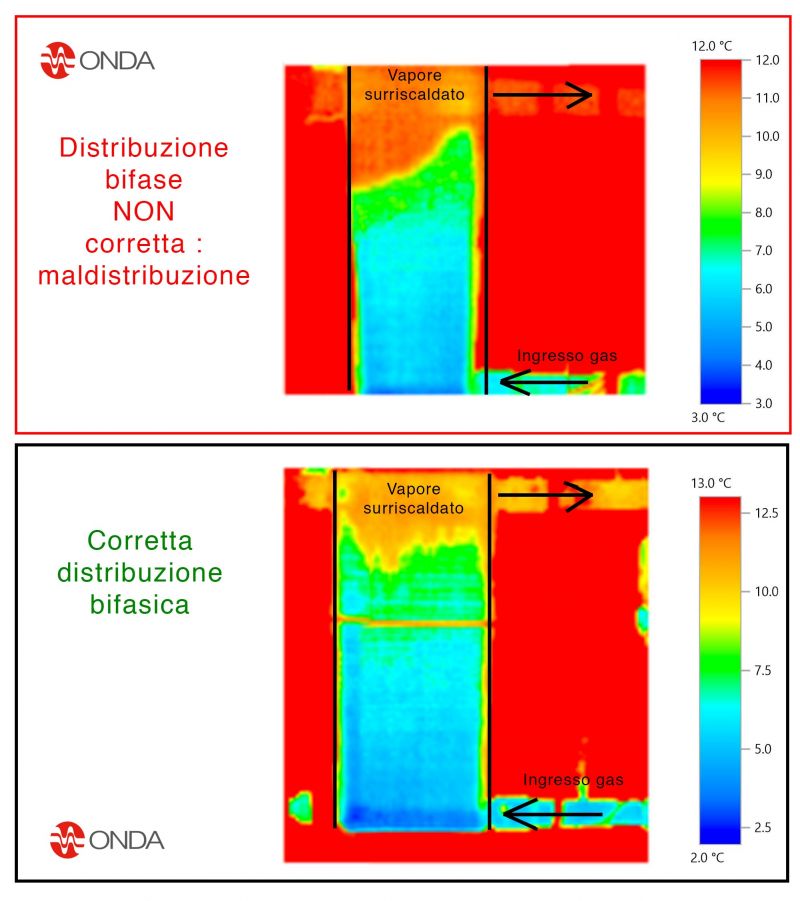
In the last case of brazed plate heat exchangers condenser, on the other hand, we have a refrigerant fluid in a gaseous state (generally at a high temperature about 60-70 °C) that condense at the expense of a fluid which, on the other side of the exchanger, is heating up.
In general the condensing temperature of the refrigerant is about 40°C and the fluid in the other side goes from 30 to 35°C.
The last part of the exchanger is used to subcooling the liquid condensate by a few degrees, usually 3-4°C.
In this case the superheated gas enters at the top and descends through the exchange plates, condensing until it becomes liquid and exiting at the bottom.

Enrico Golin
Wieland Onda Srl
Shell and Tube Condenser
25 October 2019How a plate heat exchanger works
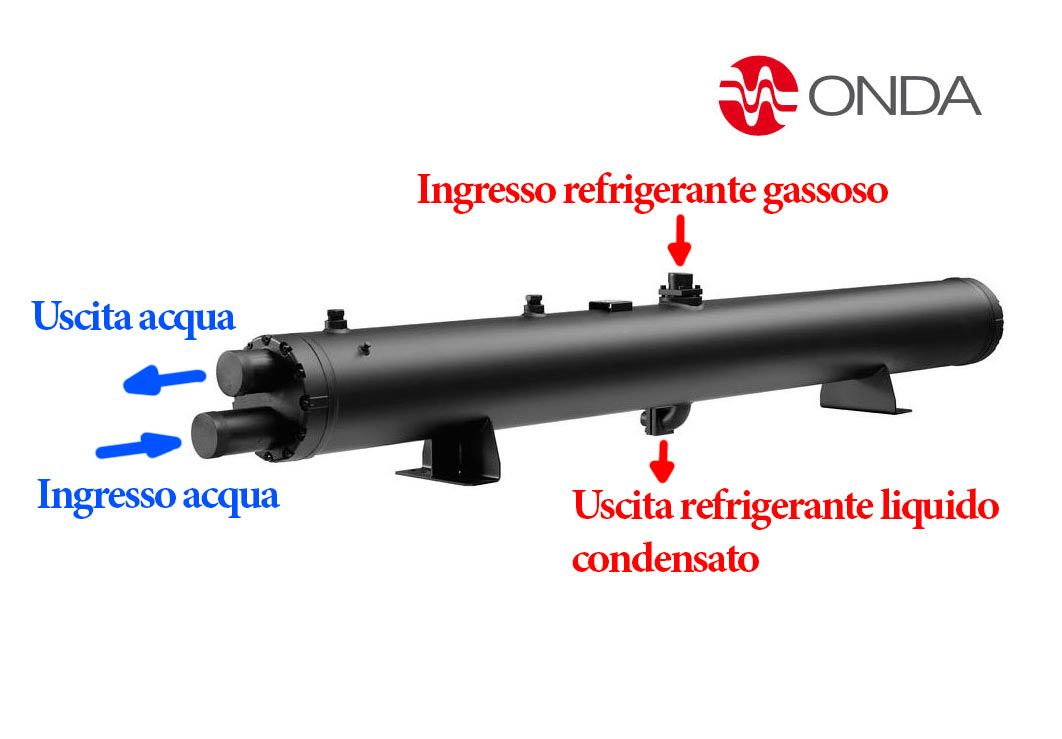
Shell and Tube Condensers
The main applications of the Shell & Tubes condensers are the condensation of refrigerant gas in the air conditioning and refrigeration plants, and heat recovery.
All refrigerants are suitable, provided they are compatible with the materials used for construction.
In standard conditions shell & tube condensers have an heat capacity between 10 kW and 2 MW.
Congress of refrigeration ICR2019
16 September 2019Archivio news
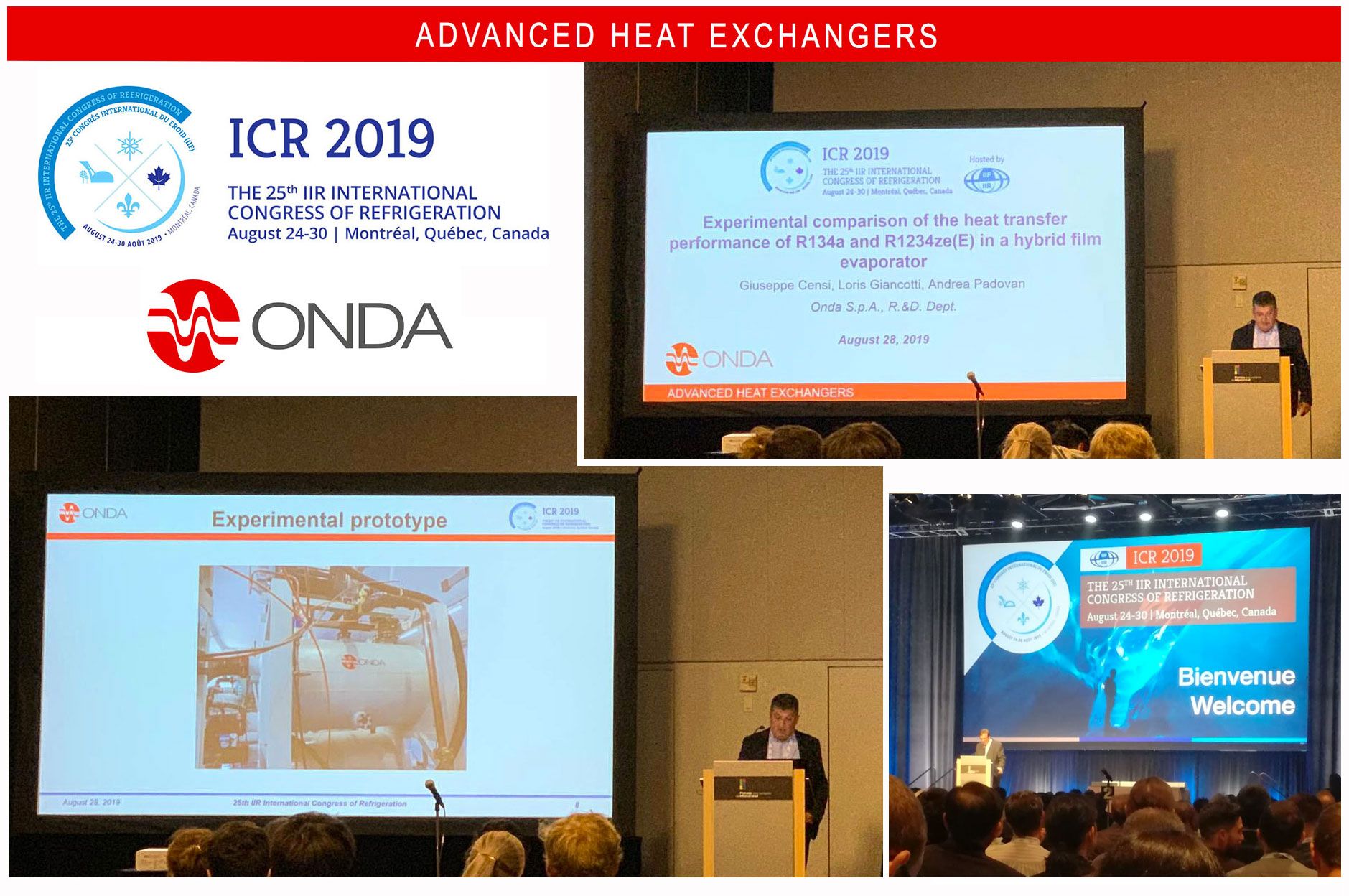
Onda attended the 25 th IIR International Congress of Refrigeration ICR2019, held in Montreal from August 25 th to 31 th, 2019.
Onda wanted to actively give its contribution to the research against global warming. An experimental and theoretical work on low-GWP refrigerants evaporating in new low-charge and high-efficiency heat exchangers was presented. The scientific study was entirely conducted inside Wieland Onda by the R&D team with the support of the internal Laboratory of Heat Transfer; in particular, it deals with a direct comparison between R134a and R1234ze(E) in the new Wieland Onda Hybrid Film Evaporator.
The paper presented at ICR2019 is referred as:
Giuseppe Censi, Loris Giancotti, Andrea Padovan, (2019) “Experimental comparison of the heat transfer performance of R134a and R1234ze(E) in a hybrid film evaporator”. Proc. of the 25th IIR International Congress of Refrigeration, August 25-31, Montreal, Canada, pp. 2706-2713.
and can be found in the “ICR2019 Book of Proceedings” at the official IIR/IIF website (http://www.iifiir.org/) or at the congress website (https://icr2019.org/).
If you are interested on receiving a free copy of the paper, please write to gcensi@onda-it.com specifying in the object “ICR2019 Wieland Onda paper request”, kindly reporting your name and, if you want, your affiliation (if any).
30th anniversary of Onda
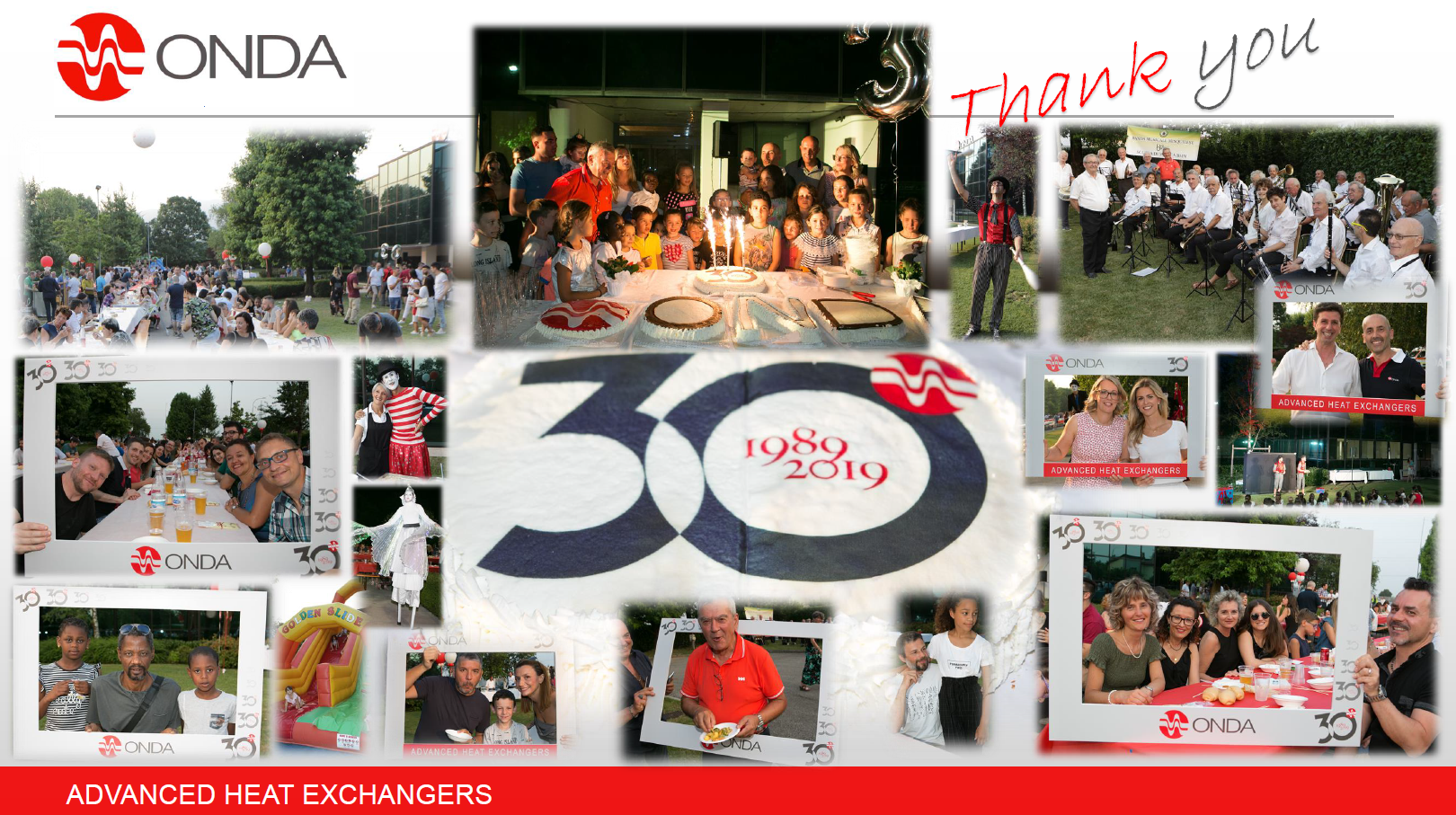
When celebrating 30th anniversary of ONDA, we should recall the most important pictures of its own hystory. Not the first product done, neither the first sales in export nor the the first subsidiary opened but the families, the babies born, the first loans of the houses, the first day of school for sons or the vacation we ever dreamed. Because what the Company has done in 30 years is .... to make dreams come true; the dreams of all families working in ONDA. The most beautiful thing is ... that all colleagues participated to make our dreams come true!...
Happy birthday ONDA...
